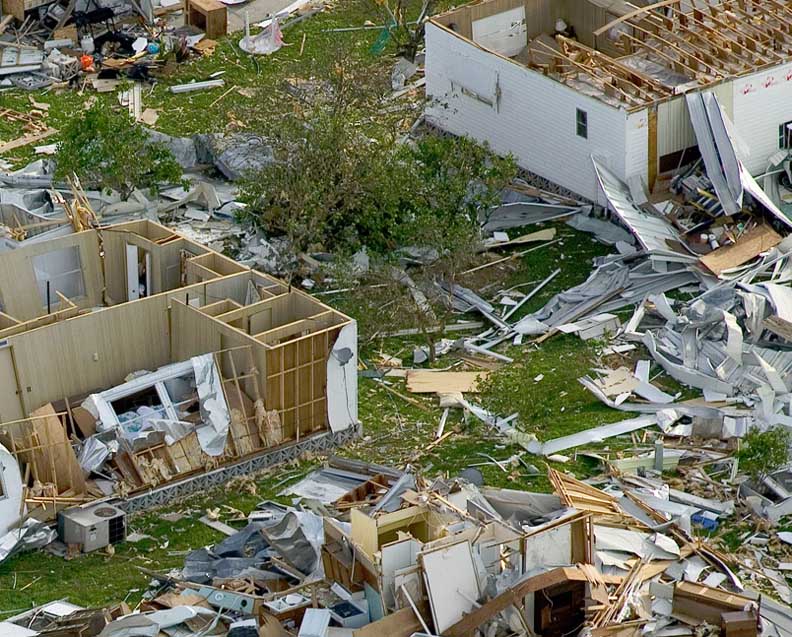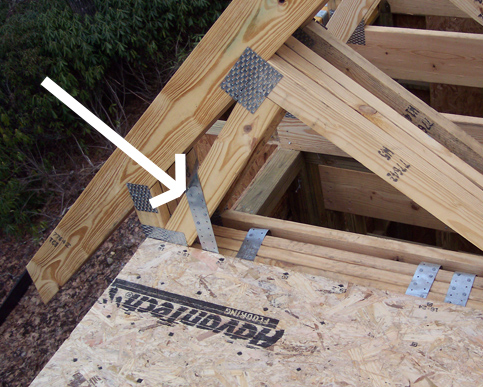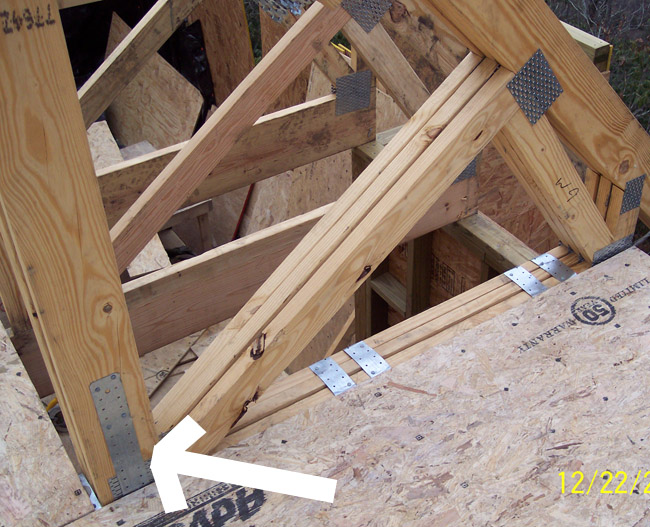Not until a huge storm kills tens, hundreds or thousands of people do building codes and state and Federal laws change. The fact is: good residential architectural keeps you and your family alive.
Come back home to your house, not just your lot
 And by “architecture” that = houses designed by real licensed registered architects.
And by “architecture” that = houses designed by real licensed registered architects.
That is the legal definition of architecture: buildings and residences created by architects. Anything else is just a building or a builder’s house. What is it about real architecture that keeps you alive? Well, architects typically go out of their way to make your house STRONGER than required by code. Especially architects that have been through catastrophic storms.
Rand Soellner, AIA/NCARB/LHI of the HOME ARCHITECTS ® was running an architectural firm in Orlando, Florida, with another office in Miami, when Hurricane Andrew came through, decades ago. People in substandard housing and even in houses built by builders to “minimum code” were not strong enough to withstand the wind and rain forces. Houses collapsed and countless people died. Perhaps you knew people in that disaster who lost life and limb. What a nightmare.
Architects help keep you alive
What teams of researchers discovered during the aftermath, was that there were inadequate provisions to hold the roof structural members down to the walls and to secure the walls to the foundations. When windows or garage doors were breached by wind-borne debris, the wind howled in and like a prize-fighter’s uppercut, slammed into the underside of the roofs. That, along with the intense air-suction above the roofs, literally sucked the roofs off and then the walls fell over, without the horizontal restraining capability of the roof present and the houses crumbled and blew away.
And this still happened to roofs and walls, even those whose windows were intact. Most of the blame came from identifying that the builders had typically used only common (smooth) nails, in an angled or “toe-nailed” configuration, with no steel plates, or only very small “hurricane “clips” ” that were just too little, and without enough nails. The wind was able to suck these smooth nails right out of the wood to which they were nailed, and the thin, small “clips” were easily torn apart or fell away when the nails were sucked out.

So: prudent architects, like the HOME ARCHITECTS ®, learning from the horrors of the past, implemented into their designs for their houses for their clients, special steel tie-down strapping. Every single floor joist and every roof truss in their houses are now indicated and specified to have this strapping, held in place by multiple ringshank nails, put into shear, rather than pull-out locations. This means that every nail will have to be broken in two, cut in half, before they will let go of the strapping that secures each strap to the walls and foundations. And the foundations themselves will have to be sucked out of the ground (highly unlikely) before they let go of all of these reinforced joints. The cost? Pennies for each length of galvanized steel strapping.

Didn’t think your house could be blown down?
Wouldn’t you want this in your next house?
How about the people who were killed or maimed in the most recent storm: Hurricane Sandy? Do you think that they would have loved to have had a house designed by an architect with these sorts of life-saving prudent, cost-effective components? Hindsight is 20/20. Now, armed with this knowledge, since YOU are reading this, you can do something about this and make sure that you and your family is protected, by having your next house designed by an architect knowledgeable in this sort of reinforcing.
This is only one example, that doesn’t even begin to get into the Quality of Life issues of living in an architect-designed house. Nor does it touch on the fact that most architect-designed houses have in their specifications, low or no-formaldehyde emissions from insulation and other building materials, which can spell life or death for someone with asthma or other respiratory illnesses like COPD. Nor does it include thorough discussions of issues like reduced or eliminated mold in architecturally designed houses due to the superior type of tile grout specified in bathrooms, showers and kitchens by knowledgeable residential architects. Once again, life or death for certain people, or at the very least, a much better quality of life.
How can you Not afford an architect?
Very few, if any builders (particularly unlicensed ones) or “residential designers” are likely informed about these things. They have no license to practice architecture, and may simply not know these facts, or otherwise have no incentive to provide such things built into their business models. You, however, pay the price for this lack of information and lack of prudent precautions built into your house. All most of these unlicensed people often care about is meeting “minimums”, which, as you have seen and perhaps experienced in your own life, does not necessarily keep you or your loved ones alive. Real architects have extensive university education and degrees, have passed grueling professional registration exams, proving their knowledge and had to obtain years of apprenticeship to other licensed architects in order to be allowed to practice on their own, then, they have to take detailed CEUs (Continuing Education Units) each year. Only one profession requires this for the design of houses and buildings: architecture.
What is built into an architect’s business model? Helping their clients have the best house they possibly can. Architects are on your side. They work for you. Engage one to design your next residence.
